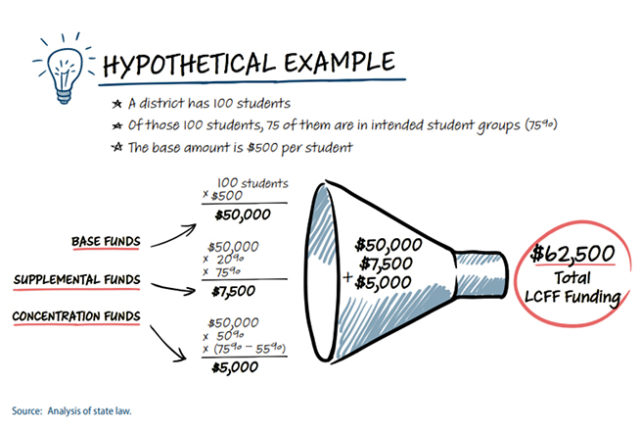Union Report: Is all the extra state student funding that districts get benefiting the kids? State auditor says we don’t know
Mike Antonucci | December 11, 2019
Your donation will help us produce journalism like this. Please give today.
Mike Antonucci’s Union Report appears weekly at LA School Report.
Somehow I missed last month’s report from the California State Auditor on one of former Gov. Jerry Brown’s signature education policy accomplishments: the Local Control Funding Formula.
The formula simplified the way the state funded K-12 education in local school districts, giving every district a base amount of money, then adding supplemental funds for those with large numbers of English learners, youth in foster care and children from low-income households.

Credit: California State Auditor
In the six years since the formula was instituted, California has increased education spending by almost 50 percent. So is all that extra money, and the system designed specifically to get it to the neediest students, working?
There is no way to know, says the state auditor.
The report concluded that the state’s approach “has not ensured that funding is benefiting intended student groups and closing achievement gaps.”
The reason: “The state does not explicitly require districts to spend their supplemental and concentration funds on the intended student groups or to track their spending of those funds.”
The auditor called the current accountability requirements “essentially meaningless.”
What’s worse, and frankly is even hard to believe, the formula actually has a disincentive for districts to spend the supplemental funds on targeted student populations. Any unspent funds “essentially can be used for any purpose in subsequent years,” including pay raises or pensions, the report says.
This diversion can come with an additional monetary penalty at the taxpayers’ expense, since it “puts the districts at risk of stakeholders’ submitting complaints or filing lawsuits alleging that they have inappropriately spent the funds,” according to the report.
The funding issues are a major concern, but more worrisome is an attitude that permeates school systems beyond California. The auditor explained that districts did not effectively analyze “whether the services they provided had been successful, which makes it difficult for stakeholders to hold them accountable for continuing to fund effective services and eliminating ineffective services.”
The auditor concluded that California “needs to better establish the linkages between funding, services and student achievements.”
That seems to be a fair and sensible demand for any public outlay of money, much less one at the scale of California’s public schools. But it will never be satisfied, because too many people benefit from obscuring where it all goes.